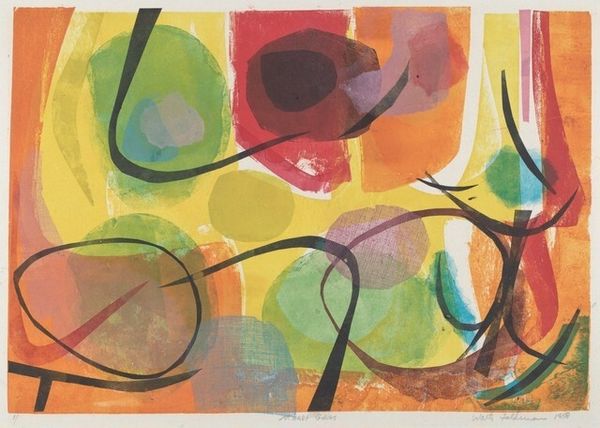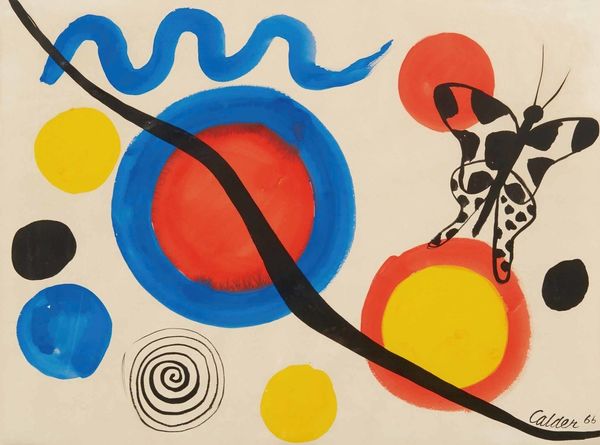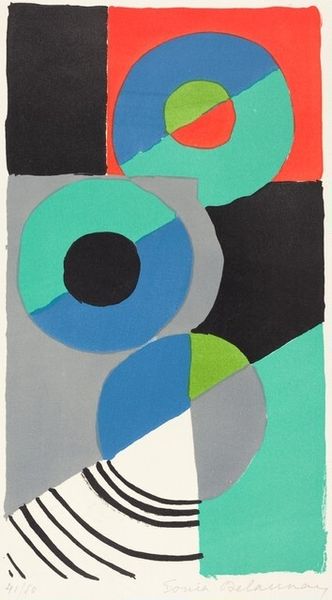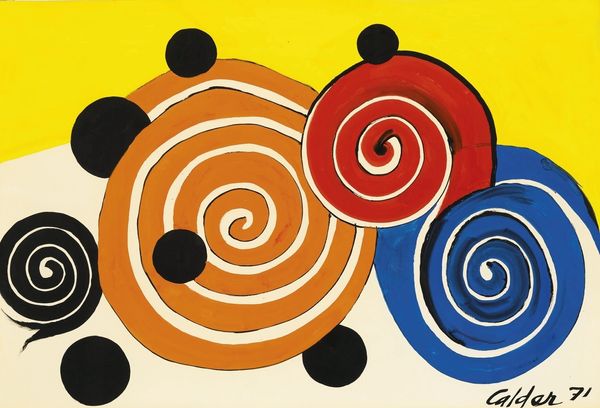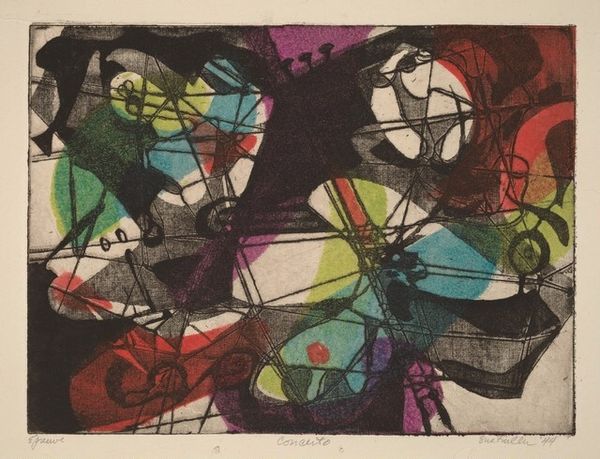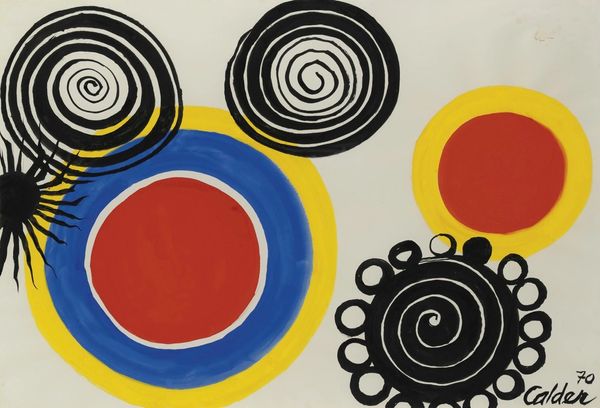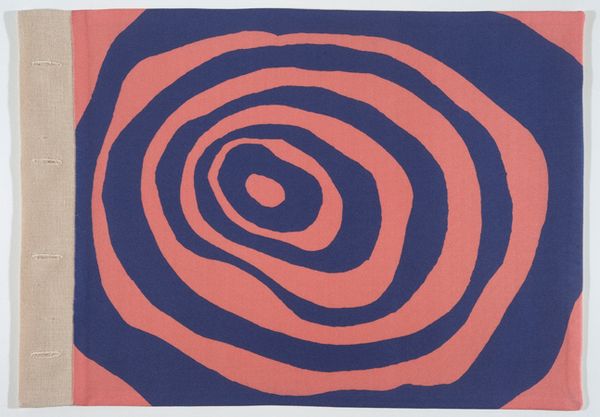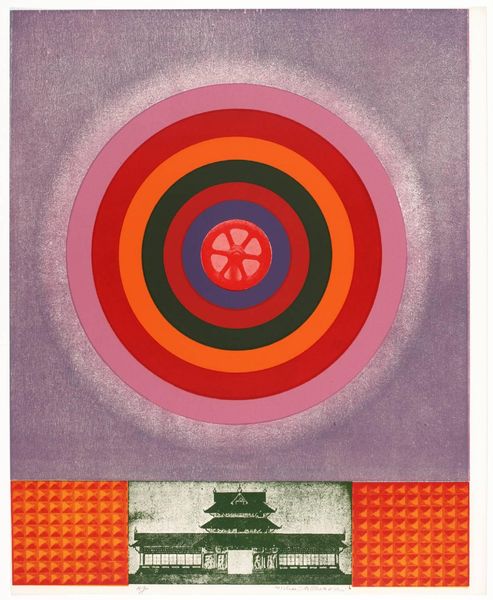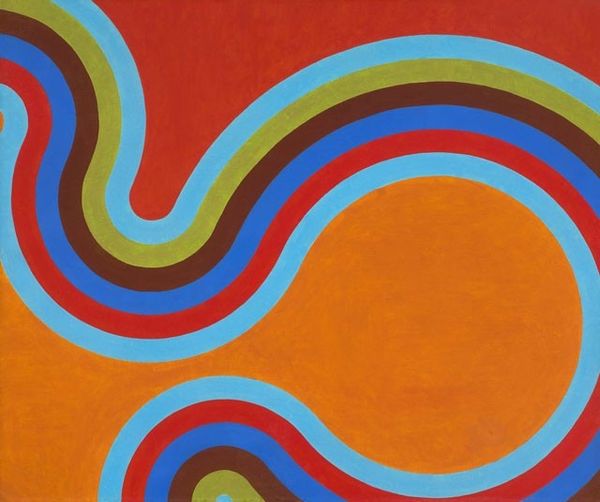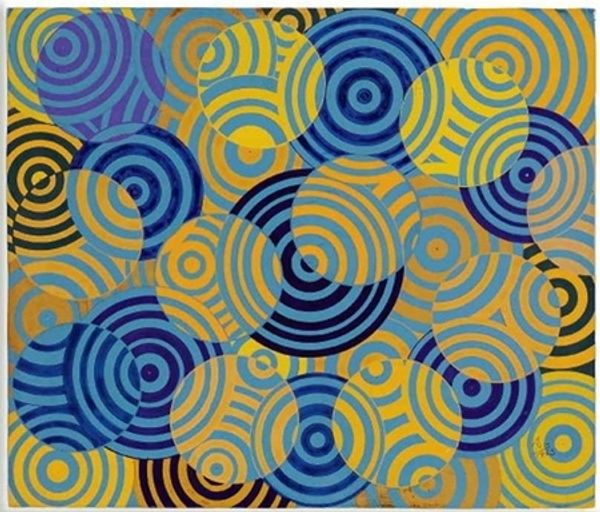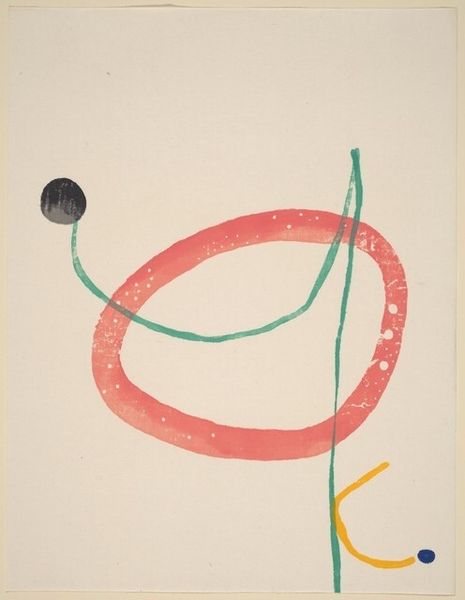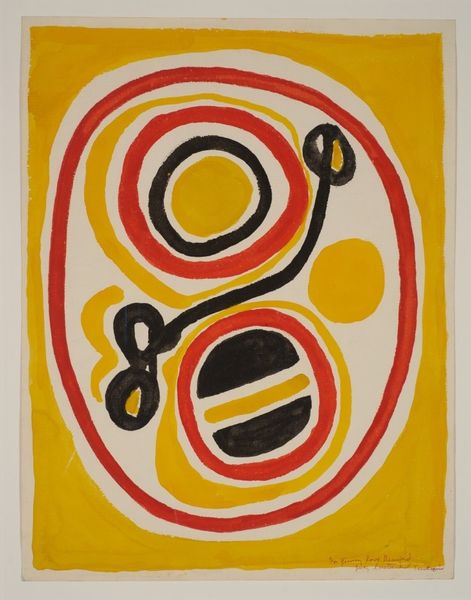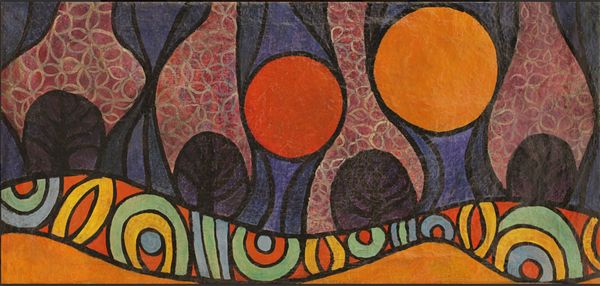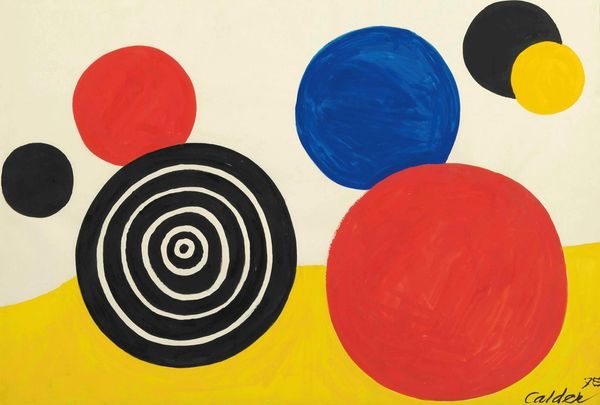
Dimensions: sheet: 63.5 × 100.33 cm (25 × 39 1/2 in.)
Copyright: National Gallery of Art: CC0 1.0
Curator: Allow me to introduce Ming Wang’s 1976 print, "Song of Circles." Editor: My initial reaction? It’s so…retro, yet clean. The shapes and limited palette are incredibly striking. A mellow graphic statement, somehow both playful and contemplative. Curator: Yes, Wang engages with the aesthetics of Pop Art here. It’s fascinating how geometric abstraction in print form gained momentum. Editor: I can see it. The repetition and basic shapes point to pop-art traditions, but there is also this undeniable sense of playfulness, maybe a social critique? Pop Art always felt rebellious to me in its embrace of consumer culture and mass production. Curator: It challenged established notions of high art. But looking closely at the composition here, you can discern his play on figure and ground relationship, a basic concept in visual perception that emphasizes the shifting of focus between positive elements. Editor: You are absolutely right. It disrupts conventional modes of seeing and interpreting. I am especially intrigued by the contrast in textures between shapes that almost give you that hard-edge Pop feel and the faded gray surface overall. Curator: This subtle contrast plays a pivotal role, giving us access to a deeper layer of visual and contextual complexity, prompting critical discussions surrounding geometric abstract art. This reminds us of the museum’s role in defining and promoting certain art trends during that time. Editor: It definitely speaks volumes about what institutions decide to elevate, and how those choices in turn shape our perception and understanding. Do we view "Song of Circles" primarily through a formalist lens, or do we explore its place within broader intersectional narratives, questioning representation, power, and maybe even gender? Curator: Exactly! It’s this interplay between context and materiality that invites us to continuously question art history itself and our position within it. Editor: This brief exchange gave me an enriching journey. Seeing art not as static objects but rather, as active participants in shaping dialogues on identity, politics, and social justice! Curator: Absolutely! By investigating pieces like “Song of Circles”, we confront our history and move towards more equitable spaces.
Comments
No comments
Be the first to comment and join the conversation on the ultimate creative platform.
